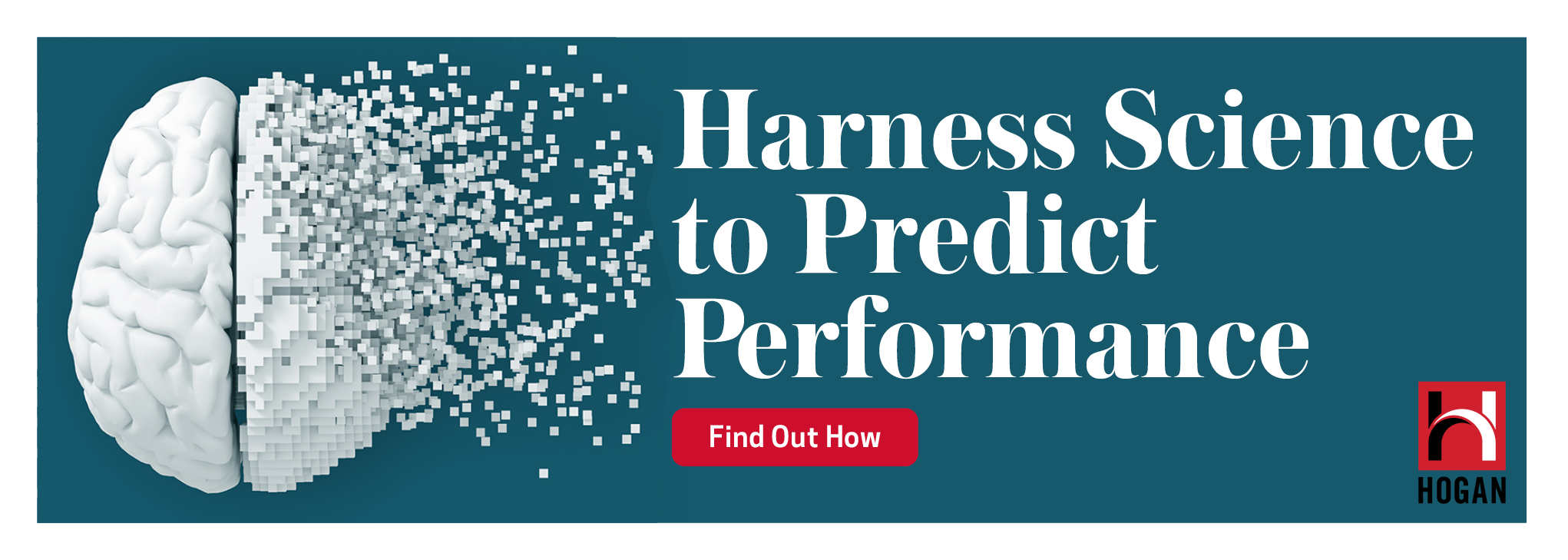Grit can be great. It can also burn you out—and tank your team, too.
By Derek Lusk and Jonathan Kirschner
For years, leaders have contended with competition, complexity, chaos, and continual change. Over the past decade, however, both the scale and frequency of these challenges have steadily increased.
Now, as the coronavirus crisis drags on, leaders and organizations face unprecedented challenges and an unknowable future. Compounding these challenges are the difficulties leaders face at home: the claustrophobia of quarantine, the stress of uncertainty, and the exhaustion that stems from balancing their roles as professionals, partners and parents. In this environment, leaders and their teams will undoubtedly experience setbacks. It’s how they respond to those setbacks that will determine their success.
Sign up for the monthly TalentQ Newsletter, an essential roundup of news and insights that will help you make critical talent decisions.
Resilience is the psychological capacity to adapt to stressful circumstances and bounce back from adverse events. Studies show resilient leaders experience less stress and have better mental and physical health, are more able to adapt to change and overcome setbacks, and tend to lead more successful teams and organizations.
But could too much resilience be a bad thing? Studies show even adaptive traits become maladaptive when taken to the extreme, and Rob Kaiser’s research on leadership versatility indicates strengths become weaknesses when overused. Indeed, in our years of coaching leaders in organizations around the world, we’ve seen leaders’ so-called resilience work against them in times of crisis.
Here are four common examples of resistance backfiring, big time. If any of these sound familiar, follow our actionable advice for cultivating sustainable resilience (the good kind) instead.
#1: Resilience makes you waste time chasing unattainable goals.
Adopting an optimistic mindset—believing your future will be better than your present—is an important part of resilience. Faced with a challenge, optimism can bolster your confidence and motivate you to charge ahead. And studies show an optimistic outlook leads to better workplace outcomes.
In business, we tend to laud leaders who set overly ambitious goals, from Jim Collins encouraging leaders and organizations to set big, hairy, audacious goals to our fascination with businesses like Alphabet’s X, which literally calls itself “the moonshot factory” on its website.
Too optimistic an outlook, however, results in wasted time and resources championing lost causes or chasing unattainable goals. Studies show people waste an enormous amount of time persisting with unrealistic goals, even when past behaviors clearly suggest goals are out of reach.
When optimism becomes delusion, business leaders underestimate the time and resources required to pursue a particular goal, as well as the risks involved. It can also cause leaders to overestimate both the potential rewards and the likelihood of success.
Resilience re-do: Make soliciting feedback part of your goal-setting process.
As a leader, are the goals you’re setting for the company ambitious, or are they the kind of unattainable goals that set you up for failure? Worse, do they create a culture that breeds unethical behavior, as was the case at Enron and, more recently, Theranos? Taking time to solicit input doesn’t mean leading by consensus. Rather, it’s leading with the most comprehensive input possible in order to manage risk and maximize your results.
#2: Too much resilience can increase your chance of burning out.
Seneca wrote that “difficulties strengthen the mind, as labor does the body.” Nietzsche famously said, “that which does not kill us, makes us stronger.”
We tend to think of resilience in heroic terms, like the U.S. Marine Corps mantra that “pain is just weakness leaving the body,” or Churchill urging his constituents, “if you’re going through hell, keep going.”
While perseverance and grit are important components of resilience, and do contribute to long-term career success, many leaders take the idea to the extreme. During the pandemic, leaders have put in increasingly long hours at the office, and many have completely erased the line between work and home.
Ample research has shown this impulse to be counterproductive. Not only does pushing yourself past the point of exhaustion lead to reduced working memory and capacity for problem solving, less creativity, and worse outcomes at work, but it also increases the chances of burnout and reduces your resilience over time.
Gallup found that more than two-thirds of workers report feeling burned out, with leaders reporting more stress and worse physical health than their employees. That’s a big problem. Burned-out leaders cause problems beyond the corner office; 69 percent of employees say their manager has increased their stress level. Managers account for 70 percent of the variance in employee engagement scores, and employee engagement is essential to success in uncertain times.
Resilience re-do: Build in recovery time.
Ann Masten points out an important part of building resilience is building and protecting what she calls surge capacity, or the mental and physical resources we use to survive acutely stressful situations. Faced with continuous challenges, this capacity becomes depleted, and we “get exhausted and overwhelmed,” Masten says.
As a leader, it’s absolutely essential to set boundaries on your time and ensure there are recovery periods built into your days. Set a time each night that you shut your laptop and turn off your phone. If your calendar tends to be a wall of back-to-back meetings, schedule intentional half-hour buffers a few times a day, and use that time to take a walk and clear your head.
Rather than feeling guilty or ashamed about the fact that you’re actually a human, model these behaviors to your employees, and insist on others implementing them as well.
#3: Resilience can create gaps in self-awareness.
Self-awareness, defined as understanding one’s strengths and weaknesses, is foundational to success as a leader. The irony? The personality traits associated with resilience are the same traits that inhibit self-awareness.
In a study of first responders, Adrian Furnham and his colleagues showed that, when faced with overwhelming challenges, some people adopt a persona resembling the archetypal heroes of old Hollywood westerns or war movies—undaunted, unfeeling, and charging up the hill as though they were invincible. Others react by shrinking from public view.
Most leaders would prefer to think of themselves as the gritty hero from the first description. And this type of response certainly has its advantages. We tend to think of individuals who display these characteristics as leader-like, and sociobiologists David Sloan Wilson and E.O. Wilson argue that within any group of people, those who are often selected as leaders tend to be more resilient than their peers.
However, this type of resilience has a significant dark side. Studies show most people already overestimate their own competence and underestimate their shortcomings. These tendencies get amplified when under stress and pressure. The personality traits Furnham and his colleagues found to enable resilience are the same traits that, under stress, inhibit self-awareness and, in turn, the ability to learn from mistakes.
For example, multiple studies suggest bold leaders are unaware of their limitations and overestimate their leadership capabilities and current performance. This can block their capacity to take in feedback that would otherwise help them improve their leadership capabilities and performance.
Resilience re-do: Become a feedback fiend.
The key to self-awareness is feedback. As a leader, it’s important that you make it easy for superiors, peers, and employees to provide candid feedback about your performance. But it isn’t enough—you must also seek this feedback out. Launch a 360-degree survey. Engage with a neutral third party, like an executive coach, to talk through your decisions. And intentionally create time with your team to ask how you can better serve them.

#4: Resilience can destroy trust on your team.
When COVID-19 came crashing down on the world, many of us held out hope, buoyed by the optimistic projections of our leaders, that the coronavirus and the economic damage it caused could be contained. Now, with the virus once again surging around the world, there’s still significant uncertainty around when the pandemic will end.
In uncertain situations, people look to their leaders for information. As mentioned above, an optimistic outlook is a crucial component of resilience. But just as ignoring their shortcomings can cause behavioral blind spots for leaders, glossing over difficult truths can create perilous blind spots for teams and organizations, or even countries. And when reality fails to match the expectations you set —whether in the form of surprise layoffs or an extended pandemic with a massive human toll—it can do lasting damage to our trust in our leaders.
The ability to build trust is the cornerstone of effective leadership. Google’s two-year study of its high-performing teams showed trust and psychological safety were the most important factors for team performance. Yet, even before the pandemic, leaders were struggling to gain their employees’ trust. According to Gallup, just one in three employees trust the leaders of their organization. That lack of trust impacts engagement, loyalty, retention, and productivity; 45 percent of people said lack of trust in leadership was the biggest issue impacting their work performance.
Resilience re-do: Reduce your power distance.
If the pandemic has shown us anything, it’s that in the uncertainty of the moment, it’s impossible to get it right 100 percent of the time. In addition to the challenges the ongoing crisis poses at work, leaders are facing many of the same challenges as their employees. While most leaders imagine their employees looking for a fearless leader to follow into battle, acknowledging your shared vulnerability is a powerful way to reduce the power distancebetween you and your employees and build trust and cohesion on your team.
Next, even though many of us are experiencing similar challenges, we still experience these challenges differently. When contact with your team is limited to a few minutes on a video conference, it can be easy to lose touch with the challenges they’re facing. In fact, many of the leaders we’ve worked with since the crisis began were shocked when a weekly engagement pulse survey showed just how much their employees were struggling.
Finally, we’ve seen leaders and their organizations show tremendous empathy toward their employees through the course of the pandemic. But empathy doesn’t change the financial reality that many organizations will face as the crisis and subsequent recovery drag on. Leaders also need to be transparent about when and how decisions will be made.
Keep Cultivating Effective Resilience
In a future of challenges exponentially more complex than they faced in the past, there’s no doubt resilience is a useful and highly adaptive trait for leaders. In this environment, leaders and their teams will encounter seemingly insurmountable obstacles and setbacks. When they do, their resilience will help them lower stress levels and maintain mental and physical health, learn from mistakes, and adapt to change.
However, when stress causes leaders to use resilient behaviors like adopting an optimistic outlook and persevering in the face of obstacles to the extreme, it can become destructive. Leaders who rely too much on their resilience may find themselves focusing energy on pursuing impossible goals, pushing themselves to the point of burnout, experiencing dangerous gaps in self-awareness, and destroying trust on their teams.
Derek Lusk is a business psychologist and head of executive assessment at AIIR Consulting, where he specializes in succession planning, leadership transformation, and culture change.
Jonathan Kirschner is a business psychologist and the founder and CEO of AIIR Consulting, a global leadership development and coaching technology firm dedicated to increasing the effectiveness and performance of leaders and their organizations by deploying science-based talent development solutions.


